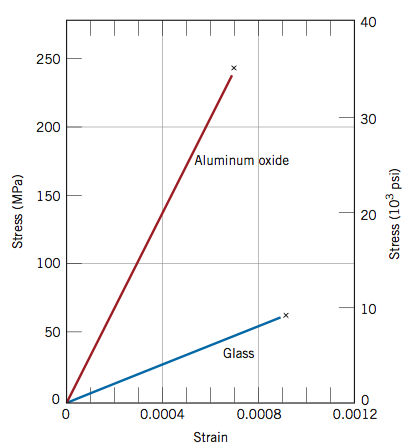Strain Point Ceramics

Silica refractory ceramics are often used for the containment of slags that are rich in a.
Strain point ceramics. The glass ceramics possess excellent chemical durability as well as thermal expansion coefficients of 35 40 10 7 c and strain point temperatures of over 900 c. The curve is linear between the origin and the first point. The final recorded point is the. Fracture strength also known as breaking strength is the stress at which a specimen fails via fracture.
Three point bending apparatus used determine stress strain behavior. This is usually determined for a given specimen by a tensile test which charts the stress strain curve. Point defects are introduced to further enhance the strain value. A 10 pa s b 103 pa s c 4 x 106 pa s d 1012 pa s e 3 x 1013 pa s.
Because engineering stress is proportional to the force applied along the sample the criterion for necking formation can be set as δ f 0 displaystyle delta f 0. Past that point if more strain is added the object may permanently deform and eventually fracture. All of the above. Transparent refractory glass ceramics based on 10 nm crystals of spinel solid solution in a highly siliceous residual glass can be produced from compositions in the sio 2 al 2 o 3 zno mgo tio 2 zro 2 system.
The highest value of electro strain 0 74 is obtained in the lead free ceramics. Ceramics tend to be weak in tension but strong in compression. Electro strain is facilitated by the nanoscale structural heterogeneity. 2 yield behavior characterized by a maximum in the stress strain curve followed by yielding deformation which is usually associated with crazing or shear banding.
What is the viscosity value corresponding to the strain point of glass. 1 brittle fracture characterized by no yield point a region of hookean behavior at low strains and failure characterized by chonchoidal lines such as seen in inorganic glasses. Plot the diagram and determine the modulus of elasticity. Alumina for example has a tensile strength of 20 000 psi 1138 mpa while the compressive strength is 350 000 psi 2400 mpa.
For brittle ceramics a three point bending apparatus shown in the figure below is used determine the stress strain behavior and the measurement results are used to calculate an equivalent modulus of elasticity. An analysis of strains and stresses in four point bending creep tests in the limit of small beam deflections resulted in a general equation which relates the load point deflection the applied load the creep exponent n and the geometrical parameters of the loading system measurements of load point deflection rates which are experimentally easy to accomplish in ceramic systems vs. Data taken from a stress strain test for a ceramic are given in the table.
















































